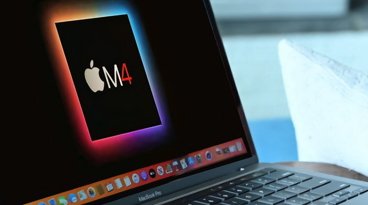Apple reportedly caused display shortage that delayed RIM PlayBook 1 month
Taiwanese publication DigiTimes reported Thursday that RIM's 7-inch BlackBerry PlayBook, which is set to launch on April 19 for $499, may have had trouble acquiring sufficient supply of touch display panels to manufacture the device because Apple consumes the lion's share of larger touch display production capacity.
Citing sources from touch screen panel makers, the report alleged that PlayBook shipments were postponed for roughly a month "due to a delay in software testing as well as shortage of touch panels because Apple already booked up most of the available capacity."
RIM's answer to the iPad had originally been scheduled to launch in the first quarter of 2011. Instead, the PlayBook will ship more than one month after Apple shipped the second-generation of its successful tablet.
Late last year, one Wall Street analyst suggested that RIM was having trouble engineering the PlayBook to get more than "a few hours" of battery life. RIM quickly denied the claim, promising that the tablet would have "superior performance with comparable battery life."
The BlackBerry maker recently revealed that the PlayBook will support Android OS 2.3-compatible applications in addition to existing BlackBerry apps. A 4G version of the device is scheduled for release on the Sprint network this summer.
For its part, Apple is believed to have reserved a large portion of the world's available production capacity for touch screens with a $3.9 billion secret long-term investment. With over $50 billion in cash reserves, the iPad maker has been known to pre-pay for components in order to guarantee priority and favorable pricing.
According to a recent Bill of Materials estimate from iSuppli, manufacturing challenges have driven up the cost of the touchscreen on the iPad 2 to $127, $30 more than the original iPad.
Last week, rumors swirled that Apple had inked a deal with AU Optronics to supply LCD screens for the iPad 2, though AU executive vice president Paul Peng denied the rumors.
 Josh Ong
Josh Ong










 Malcolm Owen
Malcolm Owen
 William Gallagher and Mike Wuerthele
William Gallagher and Mike Wuerthele
 Christine McKee
Christine McKee
 William Gallagher
William Gallagher

 Marko Zivkovic
Marko Zivkovic









